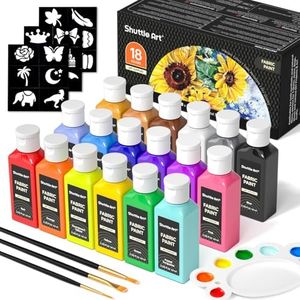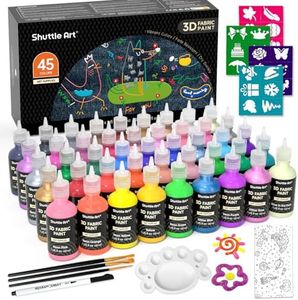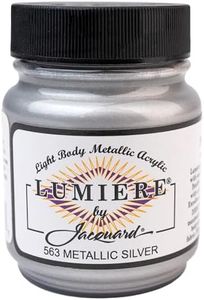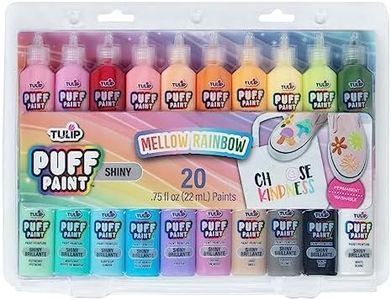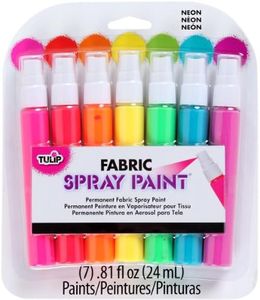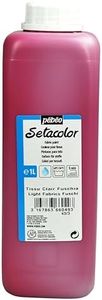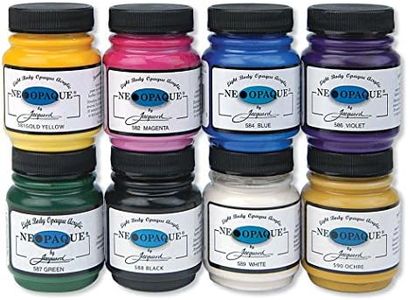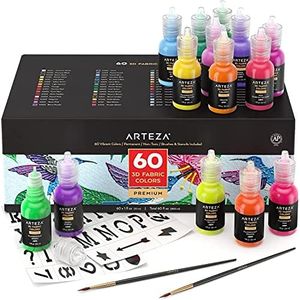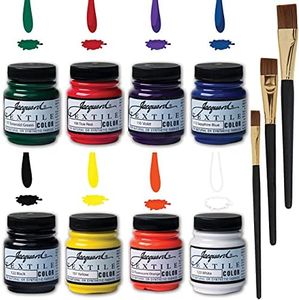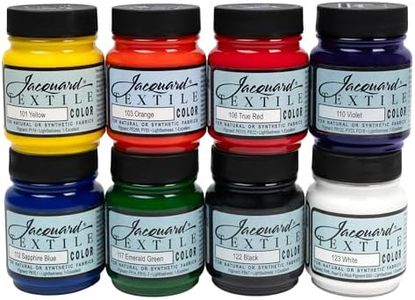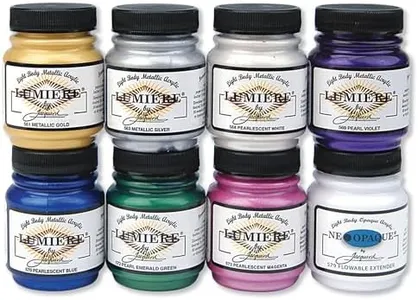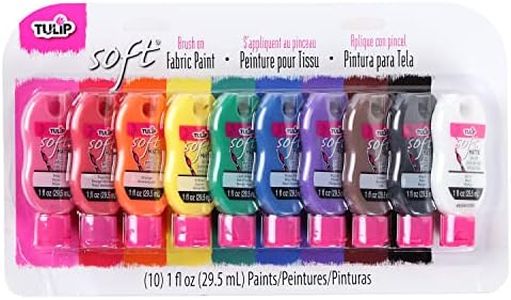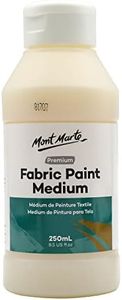We Use CookiesWe use cookies to enhance the security, performance,
functionality and for analytical and promotional activities. By continuing to browse this site you
are agreeing to our privacy policy
10 Best Fabric Paints
From leading brands and best sellers available on the web.Buying Guide for the Best Fabric Paints
Choosing the right fabric paint can make a big difference in your projects, whether you're customizing clothes, designing tote bags, or creating unique home decor. The perfect paint depends on your material, desired finish, and how you want your artwork to last. To find your best fit, you'll want to understand some key specs that determine how fabric paint acts, looks, and holds up over time.Paint Type (Acrylic, Dye, Marker)The type of paint is essentially the form and base of the color used. There are mainly three categories: acrylic-based fabric paints, fabric dyes, and paint markers. Acrylic paints are thick, sit on top of the fabric, and are easy to control for detailed work, making them ideal for opaque designs or when covering dark fabrics. Fabric dyes soak into the fibers for a softer finish and are best when you want that 'dyed' look or subtle color blends. Fabric paint markers are marker-pen versions for detailed doodles or writing. You should pick based on your project needs; for bold, defined designs use acrylic, for softer or watercolor-like effects use dyes, and for outlining or small areas, go for markers.
Application MethodHow you plan to apply the paint matters because different products work best with brushes, sponges, spray bottles, or direct application (like pens). Brush-on paints are ideal for careful, hand-painted designs and give a thicker, textured result. Spray or airbrush paints offer smoother blends and are quick for covering large areas or stencils. Paint markers are good for precision and crisp lines. Consider how comfortable you are with each tool and the level of detail or smoothness you want in your finished art.
OpacityOpacity describes how well the paint covers the fabric underneath. High-opacity paints will completely cover the color of the fabric, making them perfect for dark backgrounds and bold, bright designs, while low-opacity or transparent paints will allow the fabric’s color and texture to show through, which is ideal for layering or more subtle effects. If you want your colors to pop on any surface, look for opaque options; if you want soft hues or work mostly on white/light fabrics, lower opacity may work better.
Washability and PermanenceThis spec indicates how well the paint adheres to the fabric and survives washing or exposure to water. Some paints require heat setting (like ironing or tumble-drying) to become permanent, while others are ready to go after air drying. If you’re painting something that will be washed or worn often, you need a paint rated as 'washable' or 'permanent on fabric.' For decorative pieces or items that won’t be handled frequently, washability might be less important.
Finish (Matte, Glossy, Metallic, Glitter)Finish is the final look and feel of the dried paint surface. Matte finishes are flat and non-shiny, giving a classic, subtle appearance. Glossy finishes reflect light and have a sheen, making colors look more vibrant. Metallic and glitter finishes add shimmer or sparkle for special effects or accents. Choose a finish that suits the style of your project and the look you're going for—matte for classic or understated designs, glossy or sparkling finishes if you want your work to stand out.
Drying TimeDrying time is how long it takes for the paint to dry to the touch after application. Quick-drying paints are great for multi-step projects or layering colors without long waits, while slower-drying paints may allow more blending or correcting mistakes. Think about how much time you want to spend on your project and if you need to handle the item soon after painting, then choose a paint with an appropriate drying time.
Flexibility and SoftnessFlexibility refers to how the paint moves with the fabric once dried. Paints that dry stiff can make fabric uncomfortable to wear or use, while those that stay soft preserve the feel of the material. If you're painting clothing or items that need to bend and move naturally, make sure to look for paints that advertise flexibility or a 'soft touch.' For decorative items that won't be worn or flexed, this might be less important.
